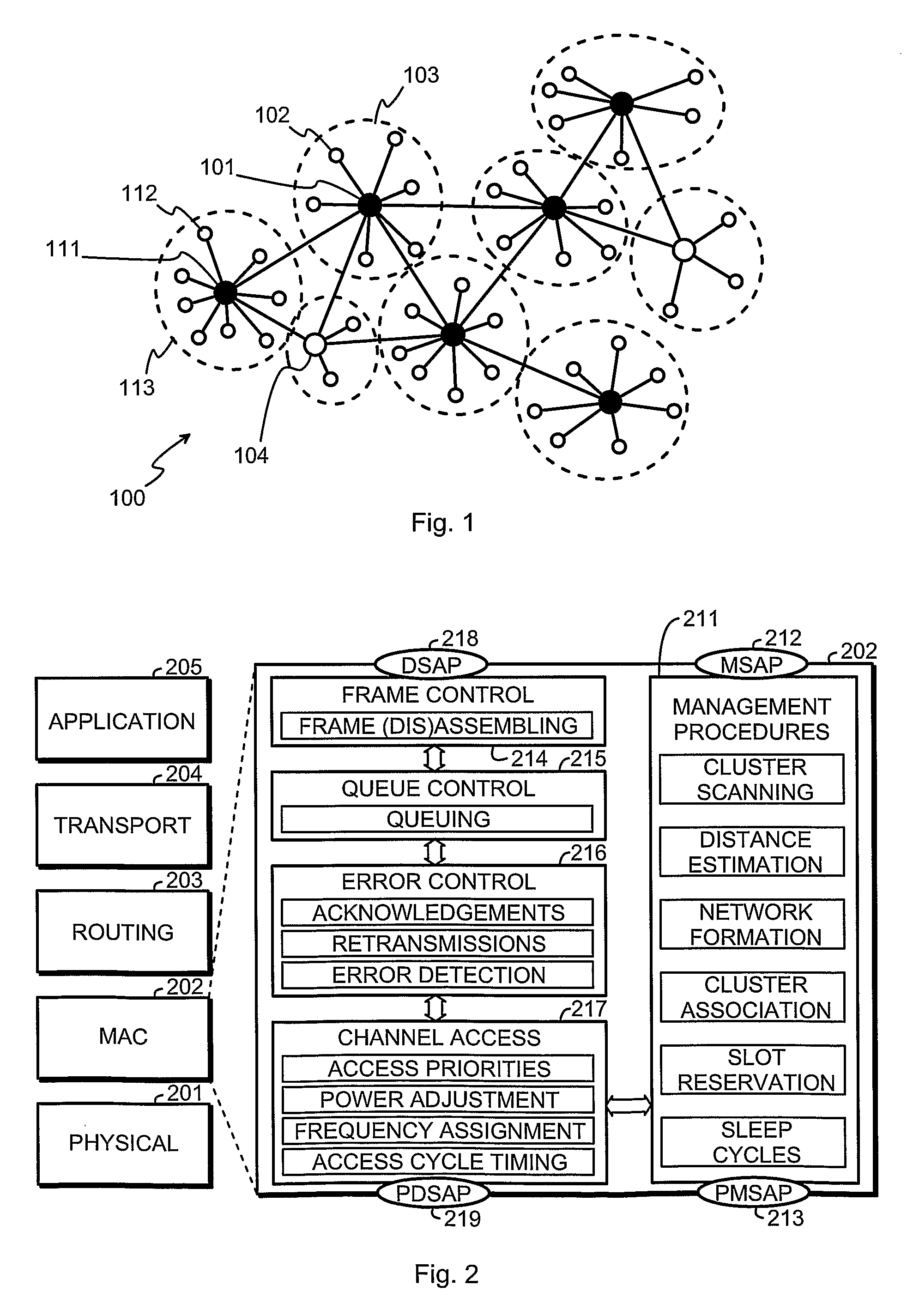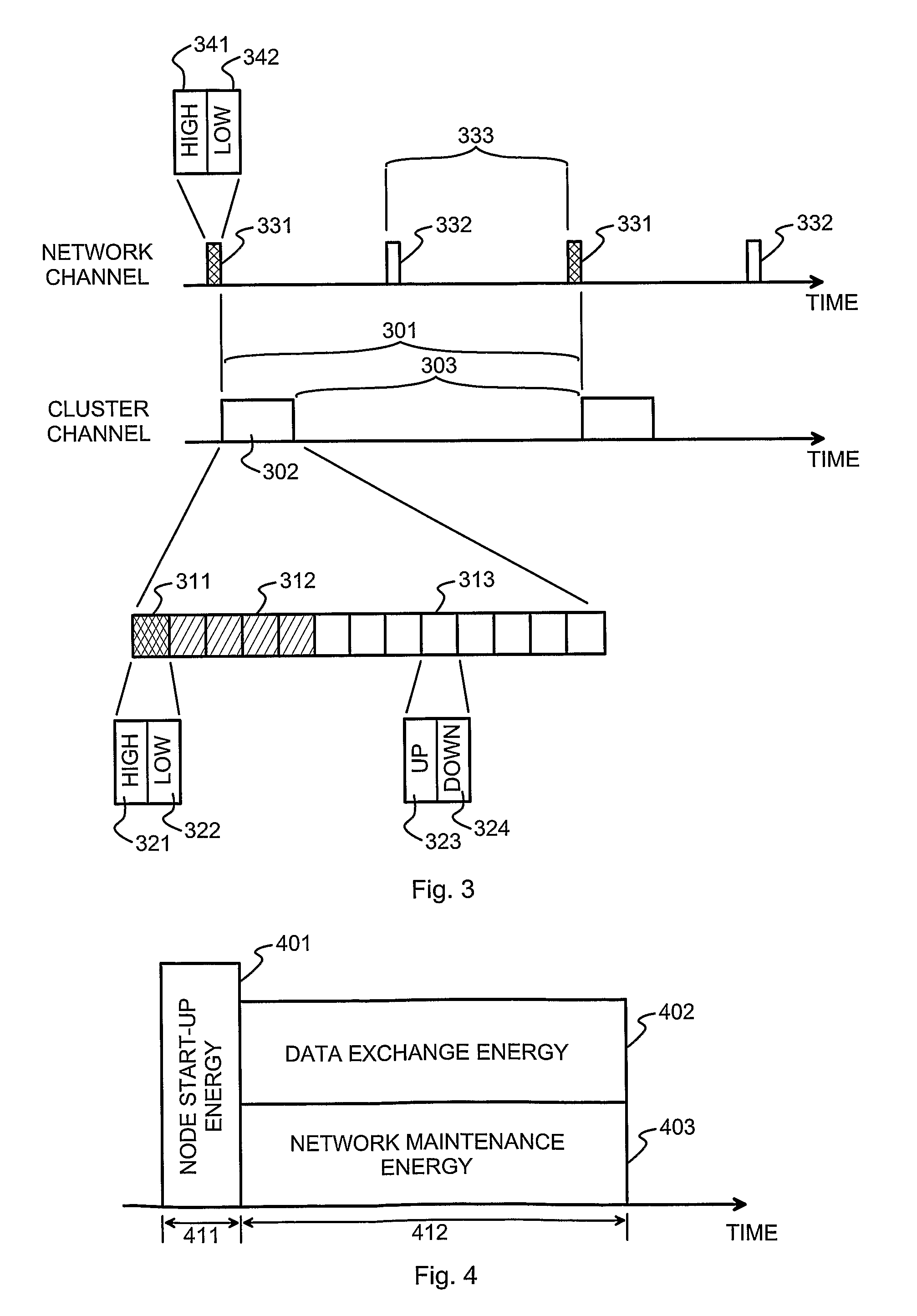Energy Efficient Wireless Sensor Network, Node Devices for the Same and a Method for Arranging Communications in a Wireless Sensor Network
a wireless sensor and wireless sensor technology, applied in the direction of wireless commuication services, network planning, power management, etc., can solve the problems of high low energy consumption of network scanning, and short scanning time, so as to reduce the overall power consumption of nodes and avoid prohibitively network scanning times
- Summary
- Abstract
- Description
- Claims
- Application Information
AI Technical Summary
Benefits of technology
Problems solved by technology
Method used
Image
Examples
Embodiment Construction
[0041]The following description will discuss various aspects of the present invention in more detail.
[0042]FIG. 1 is an exemplary graphical illustration of the topology of a wireless sensor network 100 according to an embodiment of the invention. There are a number of nodes that act as headnodes, shown as black circles, like headnodes 101 and 111. Each headnode has one or more subnodes 102 or 112, shown as small white circles, that communicate directly with the headnode. Together a headnode and the subnodes that communicate directly with said headnode constitute a cluster 103 or 113. Communications between clusters take place through peer to peer connections between the headnodes. Multi-hopping is supported and enables basically communications between an arbitrarily selected pair of nodes in the network.
[0043]Some of the nodes may act as sink nodes, meaning that they are users of information (while the other nodes are primarily producers of information) and may provi...
PUM
 Login to View More
Login to View More Abstract
Description
Claims
Application Information
 Login to View More
Login to View More - R&D
- Intellectual Property
- Life Sciences
- Materials
- Tech Scout
- Unparalleled Data Quality
- Higher Quality Content
- 60% Fewer Hallucinations
Browse by: Latest US Patents, China's latest patents, Technical Efficacy Thesaurus, Application Domain, Technology Topic, Popular Technical Reports.
© 2025 PatSnap. All rights reserved.Legal|Privacy policy|Modern Slavery Act Transparency Statement|Sitemap|About US| Contact US: help@patsnap.com



